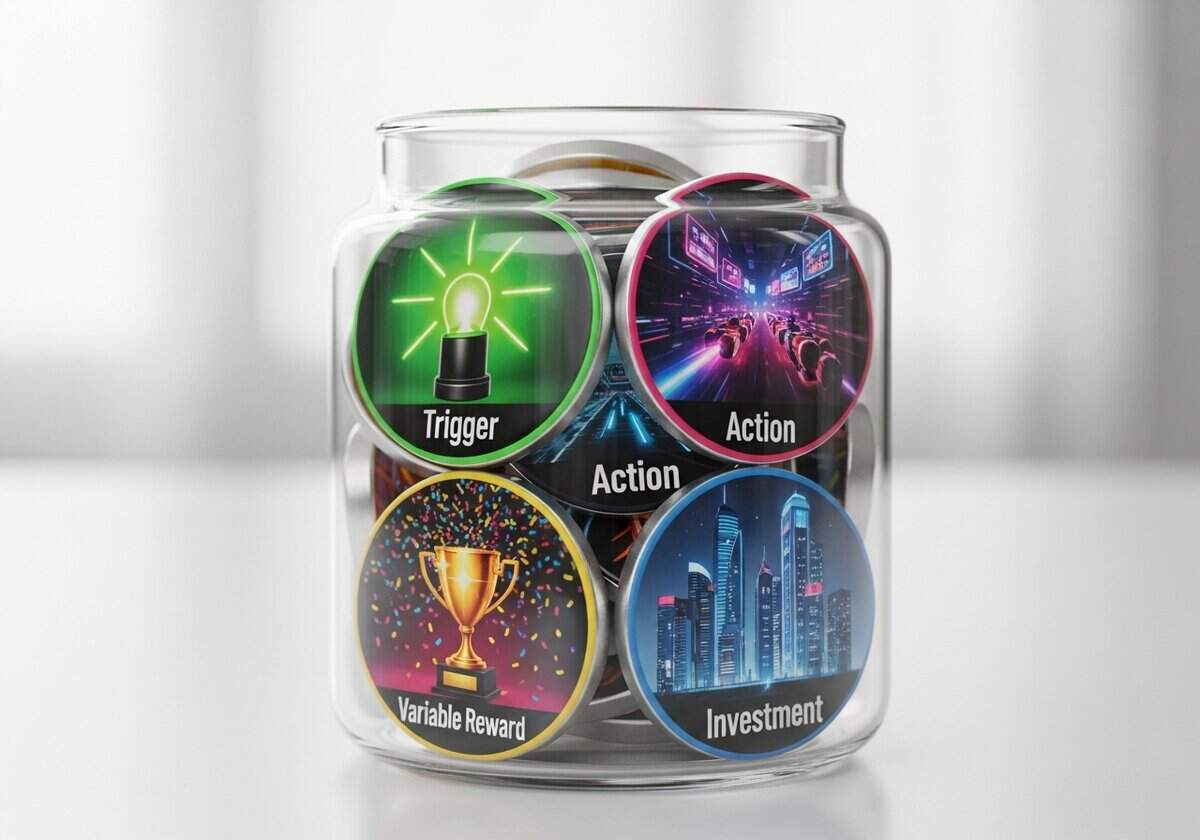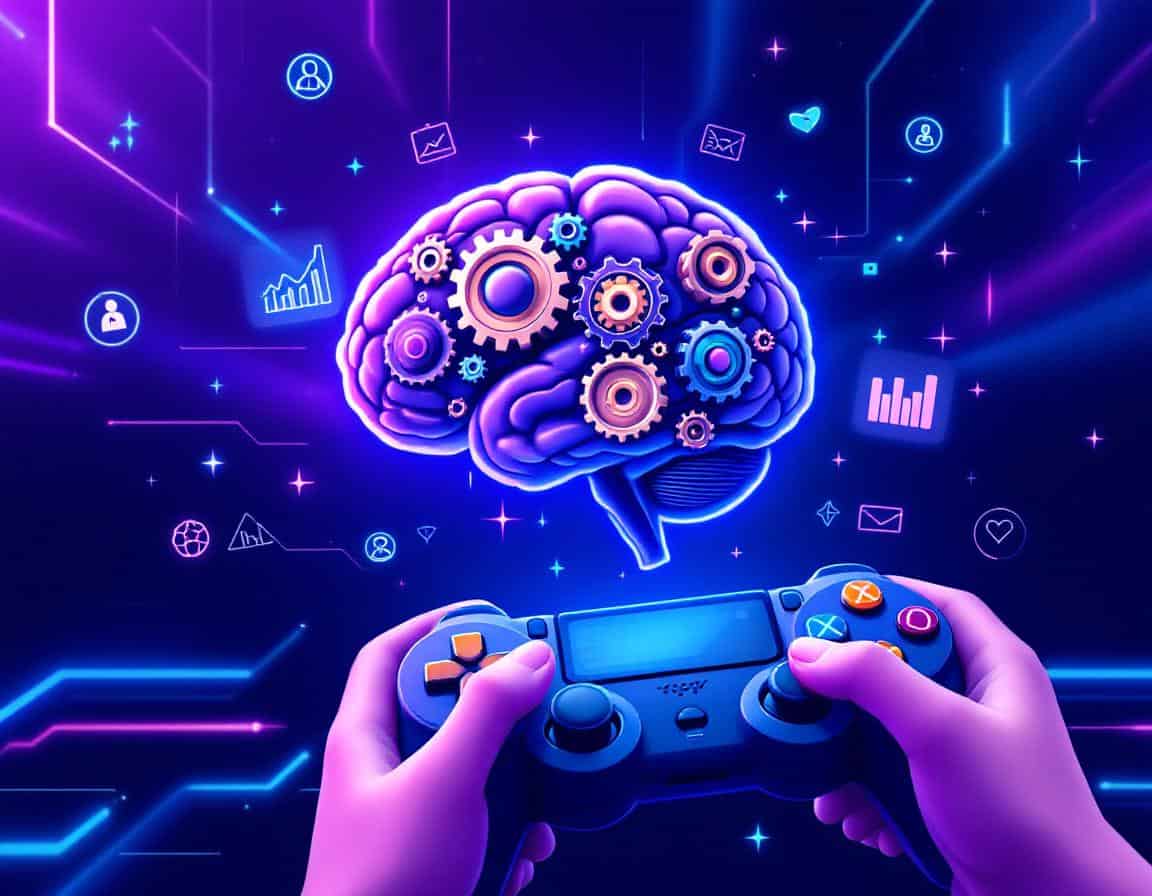
Where social science and data analyses helps hooking the player or the buyer: the design of modern interactive entertainment relies heavily on principles derived from social sciences to construct engaging and commercially successful experiences. These methods are not arbitrary but are a systematic application of established psychological concepts, from the variable rate reinforcement seen in operant conditioning to cognitive biases like loss aversion and the endowment effect.
This article is the 2nd of a 3-parts:
- Data-Driven and Statistical Tricks for Games and Marketing
- Cognitive Science Tricks for Games and Marketing
- More Cognitive Science Tricks for Games and Marketing
It follows:
Behavioral and Cognitive Theories – Key Takeaways
A significant portion of modern engagement strategy is built upon the foundations of behavioral psychology, specifically the principles of operant conditioning. This framework centers on shaping behavior by associating voluntary actions with consequences, primarily through reinforcement. The most potent schedule of reinforcement used is variable rate, where a reward is delivered after an unpredictable number of actions. This unpredictability, seen in game loot drops or random marketing offers, maximizes engagement by making the behavior itself compelling, as the user is driven by the persistent possibility of an imminent reward. Simpler schedules like fixed interval (e.g., daily login bonuses) and fixed ratio (e.g., loyalty card stamps) are also employed to build consistent, predictable habits and reward sustained user patronage.
Complementing behavioral conditioning is the application of a wide range of documented cognitive biases and heuristics to influence user perception and decision-making. Principles like loss aversion are leveraged to create a fear of missing out on limited-time offers or breaking a reward streak, as the pain of a loss is a stronger motivator than an equivalent gain. The sunk cost fallacy and the endowment effect are exploited to retain users by making them psychologically overvalue the time, effort, or money they have already invested in a game character or a service. Other biases like anchoring are used to manipulate price perception in digital storefronts, while social proof, through leaderboards and user testimonials, is applied to validate a user’s choice to engage with a product by showing that many others are doing the same.
Part #2: Psychological and Engagement Tricks

11. Intermittent Rewards (Variable Rate Reinforcement)
This is a direct application of operant conditioning:
The brain releases dopamine not just when a reward is received, but in anticipation of it.
Because the player cannot predict which action will yield the reward, a steady, highly compelling loop is created. The possibility that the next monster defeated or the next chest opened could be the one with a rare item keeps the player repeating the action far longer than if the reward was predictable.
The implementation can be managed by server-side loot tables and a pseudo-random number generator (RNG). When a player performs an action (e.g., opens a chest), the client sends a request to the server. The server then executes a script that “rolls” against a weighted probability table. For example, a legendary item might have a 0.1% chance, an epic item a 1% chance, and a common item a 98.9% chance. The server’s authority over the RNG is critical to prevent client-side hacking.
Game application: in a sci-fi shooter, defeating an enemy transport ship drops a cargo container. Most containers hold standard ammunition. However, there is a 0.5% chance a container will hold a “Prototype Weapon Schematic.” Players will destroy hundreds of transports, driven by the unpredictable, high-value reward.
12. The Hook Model

This model creates a habit loop through four stages: Trigger, Action, Variable Reward, Investment. A trigger (e.g., a push notification) prompts an action (opening the game), which leads to a variable reward (e.g., a random daily login bonus). The final step, investment (e.g., spending a few minutes arranging your base), makes the next trigger more likely to be effective by increasing the user’s stored value in the system.
It builds a psychological cycle that integrates the game into a user’s daily routine.
The IT system to support this is multifaceted. The “Trigger” often relies on a push notification service connected to a timing system (e.g., send a notification if the user hasn’t logged in for 24 hours). The “Action” is logged by the game server. The “Variable Reward” uses the RNG systems described previously. The “Investment” phase logs user-generated content or progress to a persistent database, ensuring their effort is saved and loaded for the next session.
Game application: a virtual pet game sends a push notification at 8 AM (“Your pet is hungry!”). The player opens the app (Action) and feeds the pet, which sometimes gives a rare “Shiny Treat” (Variable Reward). The player then uses the treat to teach the pet a new trick, which is saved (Investment), making them more likely to respond to tomorrow’s hunger notification.
13. Fear of Missing Out (FOMO)

FOMO leverages the psychological principle of loss aversion. The feeling that one might miss a unique opportunity, a limited-time item, or a special event is a powerful motivator.
This is not about gaining something, but about preventing the negative feeling of regret associated with missing out.
It pressures players to log in frequently, even when they might otherwise not, simply to maintain access to time-sensitive opportunities.
This is implemented using a server-side event management system. The system’s clock is the single source of truth for all time-based events. Developers define event start and end times in a central configuration file. The game client frequently syncs with the server’s clock to display accurate countdown timers in the user interface, such as “Event ends in 2d 4h 15m.” When the server time passes the event end time, the related content or offer is simply no longer served to any game clients.
Game application: an online fantasy RPG announces a “Blood Moon” event that lasts only for a single weekend. During this time, players can acquire a unique “Blood-soaked Armor” set that is unobtainable at any other time. This creates a massive surge in logins over the weekend from players who do not want to miss their only chance to get the armor.
14. Social Proof and Competition
This taps into fundamental human drives for social validation...
You have read 41% of the article. The rest is for our community. Already a member? Log in
(and also to protect our original content from scraping bots)
Innovation.world community
Login or Register (100% free)
View the rest of this article and all members-only content and tools.
Only real engineers, manufacturers, designers, marketers professionals.
No bot, no hater, no spammer.



























Related Posts
Latest Publications & Patents on Covalent Organic Frameworks (COFs)
Latest Publications & Patents on Aerogels and Aerographene
Latest Publications & Patents on High-Entropy Oxides (HEOs)
Latest Publications & Patents on MXenes
Latest Publications & Patents on Quantum Dots
Latest Publications & Patents on Perovskites